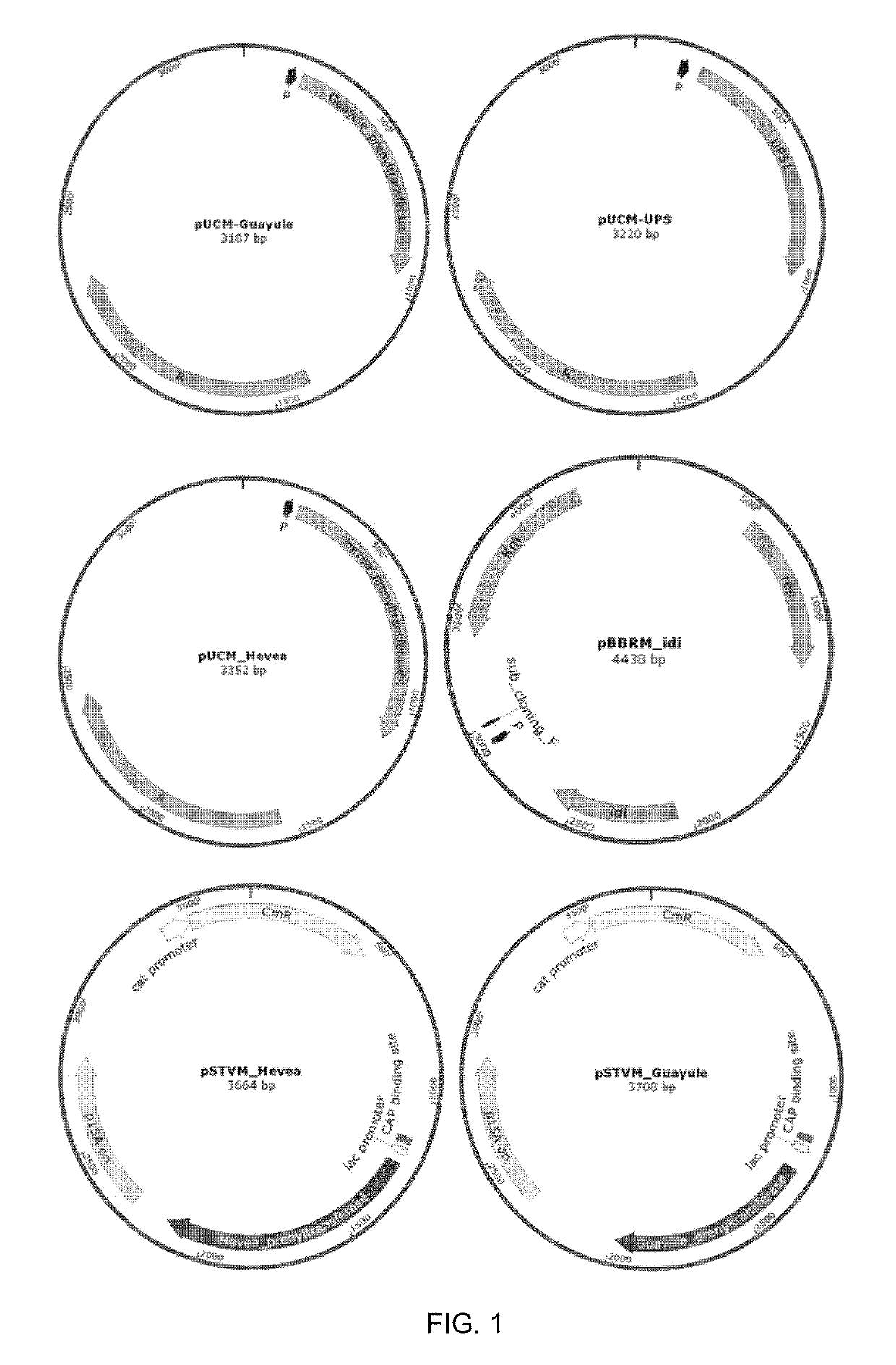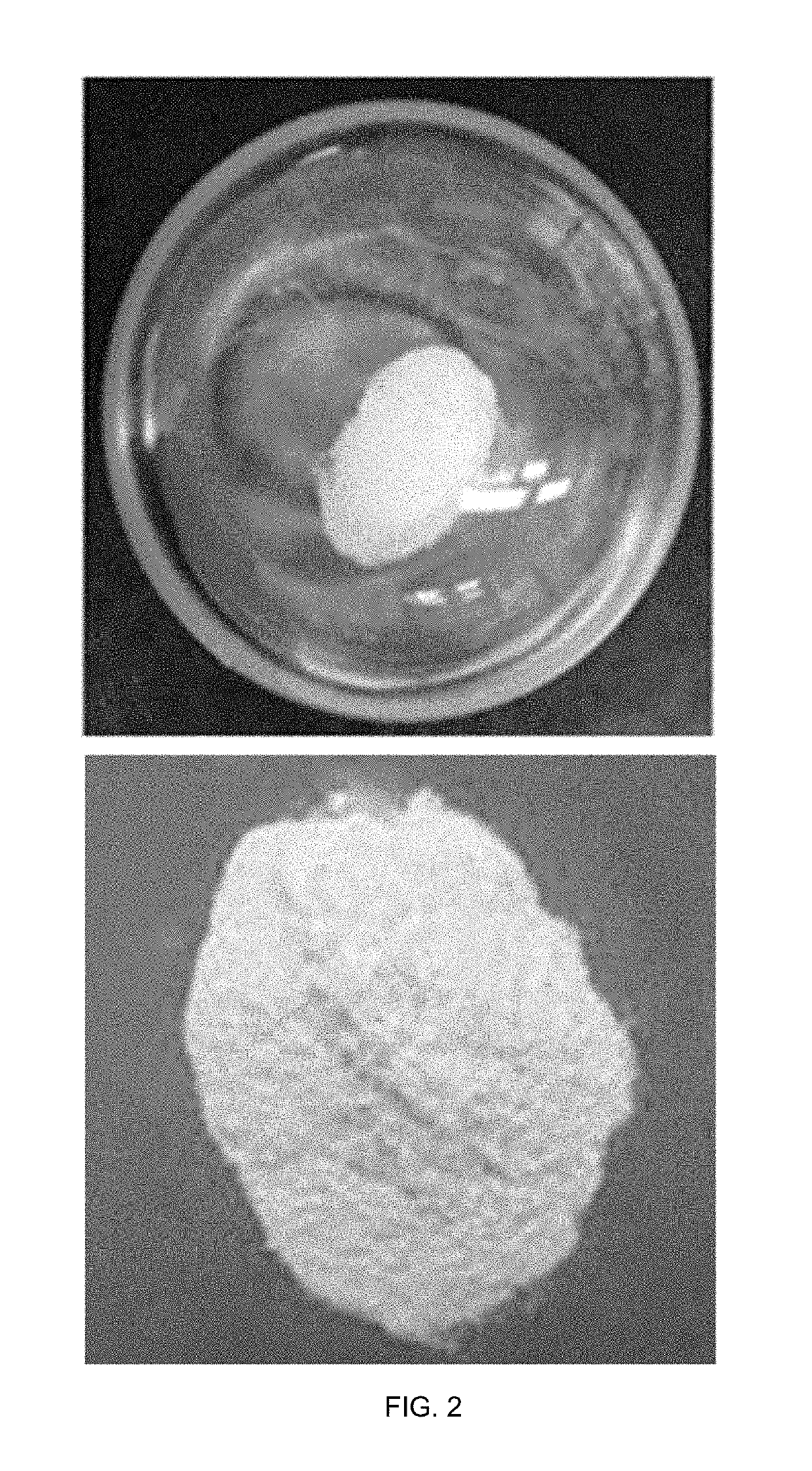Method for producing natural rubber by using recombinant microorganism
a technology of recombinant microorganisms and natural rubber, which is applied in the direction of peptide sources, transferases, enzymology, etc., can solve the problem of low genetic diversity of the rubber tr
- Summary
- Abstract
- Description
- Claims
- Application Information
AI Technical Summary
Benefits of technology
Problems solved by technology
Method used
Image
Examples
Embodiment Construction
[0074]A detailed description will be given of the present invention with reference to Examples. The following Examples are given only to illustrate the present invention, but should not be construed to limit the present invention.
PRODUCTION OF NATURAL RUBBER USING RECOMBINANT STRAIN
Production of Natural Rubber Using Recombinant Strain Having Guayule-Derived Natural Rubber Synthase Gene and E. coli-Derived Natural Rubber Precursor Synthase Gene Introduced Thereinto
Preparation and Cultivation of Recombinant Strain and Production of Natural Rubber
[0075]For the production of natural rubber, first, the chemical synthesis of both a guayule-derived gene (GenBank accession no. AF541942.1, SEQ ID NO: 1) encoding guayule cis-prenyltransferase (GenBank accession no. AAQ11374, SEQ ID NO: 2), which is a natural rubber synthase, and an E. coli-derived gene (GenBank accession no. NC_000913 (REGION: 194906 . . . 195664), SEQ ID NO: 3) encoding UDP pyrophosphate synthase (GenBank accession no. WP...
PUM
| Property | Measurement | Unit |
|---|---|---|
| molecular weight | aaaaa | aaaaa |
| pH | aaaaa | aaaaa |
| time | aaaaa | aaaaa |
Abstract
Description
Claims
Application Information
 Login to View More
Login to View More - R&D
- Intellectual Property
- Life Sciences
- Materials
- Tech Scout
- Unparalleled Data Quality
- Higher Quality Content
- 60% Fewer Hallucinations
Browse by: Latest US Patents, China's latest patents, Technical Efficacy Thesaurus, Application Domain, Technology Topic, Popular Technical Reports.
© 2025 PatSnap. All rights reserved.Legal|Privacy policy|Modern Slavery Act Transparency Statement|Sitemap|About US| Contact US: help@patsnap.com



